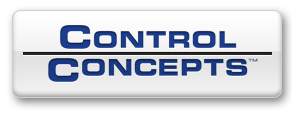Control Concepts is committed to delivering exceptional service and support for Control Techniques drives, a brand renowned for its innovation and quality in industrial automation.
Who is Control Techniques?
Control Techniques, founded in 1972, created the first digital DC drive. The company was part of Emerson Industrial Automation until 2017, when it joined the Nidec Corporation, a global manufacturer of commercial, industrial, and appliance motors and controls. Control Techniques drive solutions help businesses reduce energy costs and increase operating efficiency.
In May 2024, Control Techniques and KB Electronics transitioned to Nidec Drives, reflecting their commitment to innovation and market leadership.
What Do Control Techniques Drives Do?
Control Techniques offers a range of drives that can be used in a variety of industries.
Control Techniques AC Drives come in wide power and voltage ranges with high performance motor control, including drives designed to control all AC induction motors and drives specifically made for fan, pump, and compressor applications.
Control Techniques DC Drives offer enhanced motor performance and reliability. They are commonly used in metals, plastics, cranes, mining, and printing industries.
Control Techniques Servo Drives offer both increased efficiency in applications requiring hard accelerations and decelerations and high precision over a longer duration in applications with high RMS torque, depending on the drive series.
Control Concepts has over 30 years of experience in Control Techniques drive repair, service, and support.
Control Techniques Products We Service
Control Concepts services a broad spectrum of Control Techniques products, including but not limited to:
- Variable Frequency Drives (VFDs)
- General Purpose AC Drives: Commander S, Commander C
- High Performance AC Drives: Unidrive M700, Unidrive M600, DFS Series
- Servo Drives: Digitax HD
- DC Drives: Mentor MP, Quantum MP, FXMP25 Field Controller
Don't see your product line listed here? Contact us and ask about our drive service and support.
Industries Using Control Techniques Drives
Control Techniques drives are utilized across various industries, including:
Control Techniques Drive Repair Services
Control Concepts offers comprehensive repair and maintenance services for Control Techniques drives, including:
- Repair and Refurbishment: Specializing in Control Techniques drives to ensure they perform optimally.
- Preventive Maintenance and Diagnostics: Regular checks to extend the lifespan of your equipment.
- Component Replacement: Using high-quality parts for optimal functionality.
- On-site Support and Troubleshooting: Providing direct assistance at your facility to address operational challenges.
Common Drive Failures
- Software or programming problems
- Non-functional cooling fans
- Loose connections
- Drive keeps blowing fuses or tripping breakers
- Drive doesn’t run motor
- Circuit board failure
Circuit board failure is the least common reason for drive failures. The most common fault that shuts down a drive is an over-current fault, of which there are 20-30 causes. We start with the dynamics of the motor and move on from there.
The Control Concepts Repair Process
We check the motor drive and terminals for substandard connections which can be caused by anything from heat cycles and mechanical vibration to reusing or over-tightening torque screws.
We conduct diode and IGBT tests on the input/output power sections before applying power to the drive unit. This is to protect against further damage from a short.
We power up the unit and perform amp readings and output frequency tests, slowly increasing the voltage until the rated input voltage of the drive is reached.
If everything functions properly, we use the drive to run a motor through basic jog functions after backing up existing programs. If the motor does not run, we check the output voltages and current ratings going to the motor to check drive function for motor rotation.
Most drive failures can be avoided through preventative maintenance.
- Keep the drive free of dust
- Ensure proper ventilation to prevent overheating
- Keep everything dry and protected from moisture
For expert Control Techniques drive repair and maintenance services, contact Control Concepts.



































